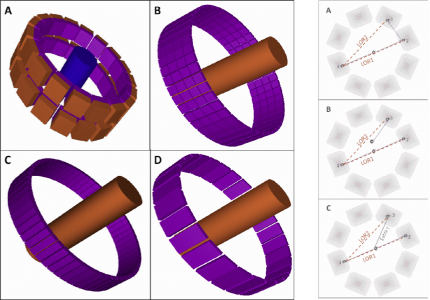Simulation of Triple Coincidences in PET

| AUTHORS | |
| JOURNAL | IEEE Nuclear Science Symposium Conference Record, 2013 |
| ABSTRACT | Most PET scanners are designed to detect and record gamma-ray coincidences from the annihilation of positrons coming from radiotracers. Multiple coincidences, those for which more than two gamma-rays are detected within the coincidence time window, are usually discarded. Those events can be registered and used to increase the sensitivity of the scanner and to differentiate positron-gamma emitters from pure positron emitters, enabling multiplexed PET. To assess the effect of triple coincidences in PET scanners, an accurate and reliable simulation toolkit is compulsory. In this work we extend and validate the Monte Carlo (MC) simulator PeneloPET to deal with multiple-coincidences in PET scanners. Details of gamma-rays cascades from several positron-gamma emitters, such as 124I, were incorporated in the simulation. Furthermore, a new tool to analyze doubles and triples datasets generated by the simulation was added to the software package. Results from simulations were first compared against data acquired with a modified version of the preclinical Argus PET/CT scanner (Sedecal S.A., Madrid, Spain), which is enabled to acquire and process multiple coincidence events. A good agreement in the energy spectra as well as in the double/triples ratio between simulations and experiments was found (differences below 10 %). Once validated, the simulator was used to evaluate the feasibility of using multiple-coincidence events in several clinical PET/CT scanners, such as the Siemens Biograph TruePoint TrueV (B-TPTV), the GE Discovery-690 and the Philips Ingenuity scanners. |
| LINK | http://ieeexplore.ieee.org/document/6829155 |



